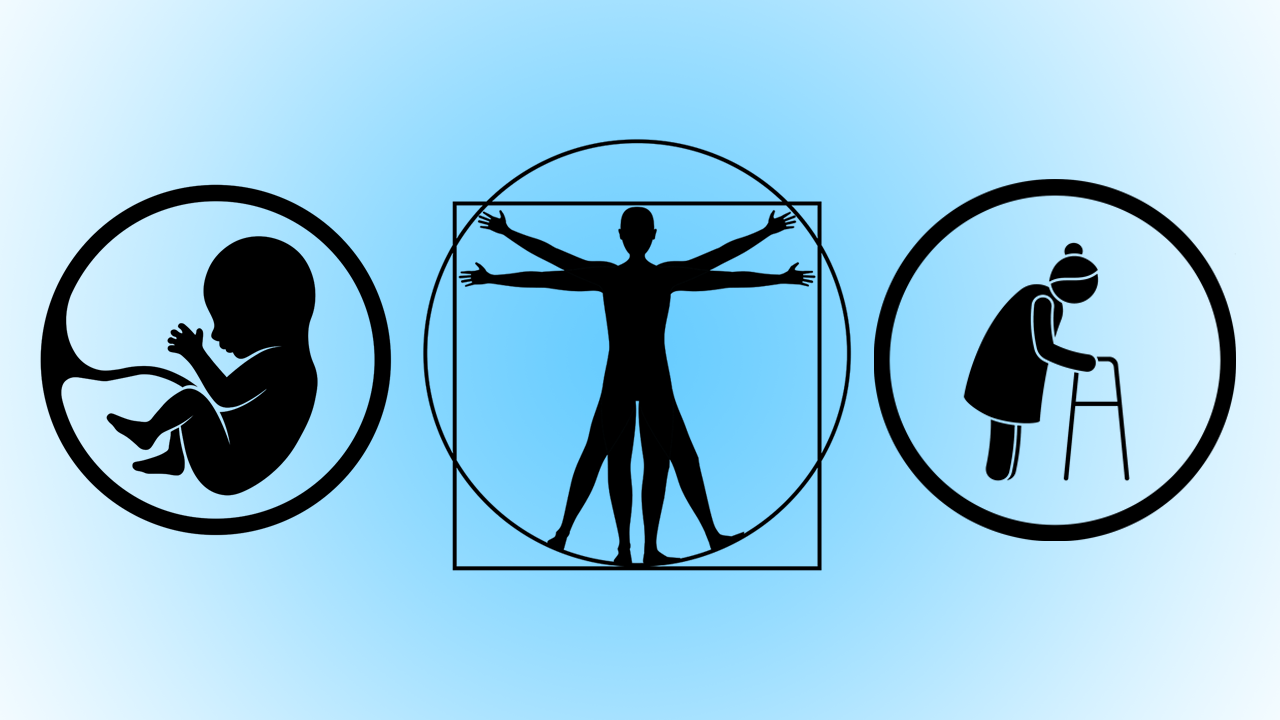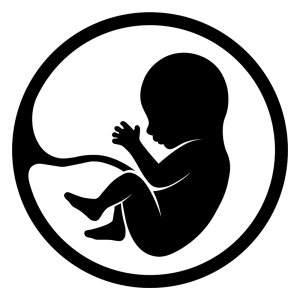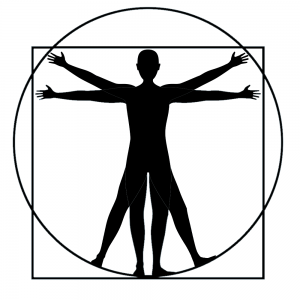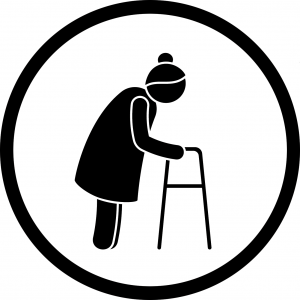
19 Jan The Circle of Life – at least for your Spine
No, don’t worry, Elton John isn’t about to pop up on your screen. Not even a cartoon lion.
There is a lifecycle to a human body, and we can look at it, cradle to cradle, or C2C as sustainability experts put it.
Since we’re all here with a common interest in back pain, it’s worth discussing how central the spine is to this lifecycle.
The Start
We all begin curled in our mothers’ tummies, in the foetal position.
When we are born, we remain mostly in this position, only slowly learning to stretch out with our arms and legs. Our spines are a single C-shaped curve from head to bottom.
The first big development in the spine is a reversal of the curve under our head. This becomes the backwards curve of our neck, and as muscles develop, we can lift and hold our heads.
Next, we learn to sit and to crawl, and these activities help develop a similar backwards curve, this time in our lower back. By the time we have mastered standing, we have a spine with three curves, or five if you count the curve of the sacrum and the curved shape of the back of our skull.
The Middle
The next decade or so is about us growing to full height.
We stand upright, walk, run and jump. We can spread our arms to the side and over our head, and we can stand and look straight up to the sky.
Think of Da Vinci’s Vitruvian man – a study of anatomy.
The challenge comes in being able to maintain this…
The Decline
The circle of life means that there is a return to that single spinal curve that we were delivered into the world with.
It starts most often in the lumbar spine where our wedge-shaped intervertebral discs lose hydration, and the posterior curve of the spine is allowed to become straighter. Our thorax tips forwards, and our head juts out in front of us.
The elderly resort to sticks or walking frames to prevent toppling forward, or they bend their knees in an effort to compensate.
This allows the stooped body to lean backwards, bringing the weight of their head closer to equilibrium, but at the expense of hips and knees.
Before you panic, let’s look closer at the journey to this state.
Your Environment Shapes You
Now that you can appreciate the changes to our spinal shape, I would invite you to look at your environment and see what it is doing to you.
Spending prolonged periods sitting, arms in front of you, head pulled forwards is essentially a reproduction of the foetal position.
While we feel strongly that we shouldn’t demonise posture in isolation, I feel that we should shout loud warnings when we see a lack of movement.
The solution? Get up, reach to the sky, look at the ceiling, and draw your arms around in a circle like you are reproducing Da Vinci’s famed sketch.
Fight the decline back to that single curve. It’s as simple as that.
Other hacks?
• Spend more time standing than sitting if you can. Use a standing desk or create the habit of taking calls standing while using a headset.
• Choose forms of exercise that prevent the forward curve. While all exercise is beneficial, sometimes we meet patients who are doing a collection of activities that somehow fail to contain enough time spent upright or even bending back a little to help keep their spinal shapes balanced.
• Be tall. Beware of solutions that pull and push parts of your body forward and back. Think tall instead. As your head reaches higher, the rest of your body will fall into its natural alignment. It’s much easier to settle into your own shape than to copy another person, or worse, an anatomy textbook.
• Invest in rotation. Rotation can cause irritation when our backs are feeling sensitive, but on our good days, making sure our bodies can rotate fully gives us freedom of bending forwards and backwards. (Spinal rotation is formed by our spines bending forward on one side, and back on the other…)
Overall, do what you can. Some of the changes we experience in life are inevitable. Change what you can, accept the rest.
Toby is an osteopath at OpenHealth, and regularly contributes to our blogs.






Sorry, the comment form is closed at this time.